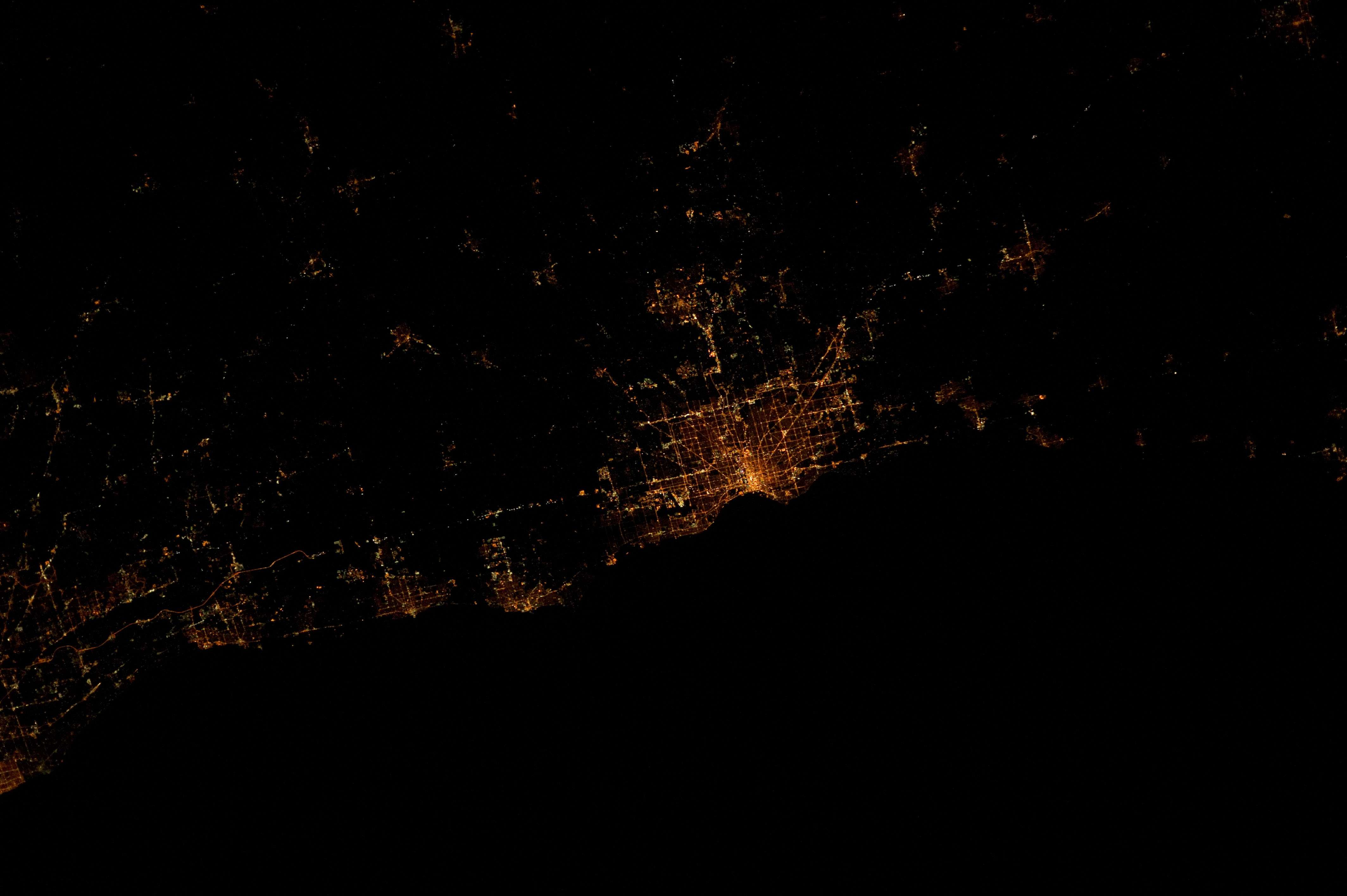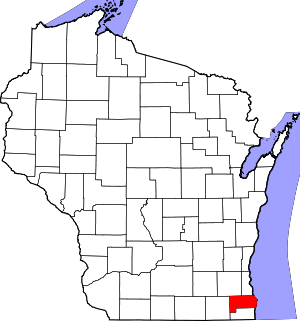Racine, Wisconsin
Racine (/rəˈsiːn/ rə-SEEN)[8] is a city in and the county seat of Racine County, Wisconsin, United States. It is located on the shore of Lake Michigan at the mouth of the Root River.[9] Racine is located 22 miles south of Milwaukee and is part of the Greater Milwaukee Area. As of the 2010 U.S. census, the city had a population of 78,860,[10] making it the fifth-largest city in Wisconsin. Its median home price of $103,625[11] makes it one of the most affordable cities in Wisconsin to buy a home. In January 2017, it was rated "the most affordable place to live in the world" by the Demographia International Housing Affordability survey.[12]
Racine, Wisconsin | |
|---|---|
 Monument Square | |
 Flag | |
| Nickname(s): The Belle City of the Lakes, The Kringle Capital of America, Kringleville, Invention City[1] | |
 Location of Racine in Racine County, Wisconsin. | |
 Racine, Wisconsin Location in the United States | |
| Coordinates: 42°43′34″N 87°48′21″W | |
| Country | |
| State | |
| County | Racine |
| Government | |
| • Mayor | Cory Mason (D) |
| Area | |
| • City | 15.66 sq mi (40.56 km2) |
| • Land | 15.47 sq mi (40.08 km2) |
| • Water | 0.18 sq mi (0.48 km2) |
| Elevation | 618 ft (188 m) |
| Population | |
| • City | 78,860 |
| • Estimate (2019)[4] | 76,760 |
| • Rank | US: 421st |
| • Density | 4,960.26/sq mi (1,915.13/km2) |
| • Urban | 133,700 (US: 239th) |
| • Metro | 195,041 (US: 221st) |
| Time zone | UTC−6 (CST) |
| • Summer (DST) | UTC−5 (CDT) |
| ZIP Codes | 53401-53408[5] |
| Area code(s) | 262B |
| FIPS code | 55-66000[6] |
| GNIS feature ID | 1572015[7] |
| Website | cityofracine |
Racine is the headquarters of a number of industries, including J. I. Case heavy equipment, S. C. Johnson & Son cleaning and chemical products, Dremel Corporation, Reliance Controls Corporation time controls and transfer switches, Twin Disc, and Arthur B. Modine heat exchangers. The Mitchell & Lewis Company, a wagonmaker in the 19th century, began making motorcycles and automobiles as Mitchell-Lewis Motor Company at the start of the 20th century. Racine is also home to InSinkErator, manufacturers of the first garbage disposal.[13] Racine was also historically home to the Horlicks malt factory, where malted milk balls were first developed, and the Western Publishing factory where Little Golden Books were printed. Prominent architects in Racine's history include A. Arthur Guilbert and Edmund Bailey Funston, and the city is home to several works by Frank Lloyd Wright. It has several immigrant communities, and is among the most diverse cities in Wisconsin.[14]
History
Native Americans inhabited the area of Racine for thousands of years. Artifacts that have survived include the burial mounds in what is now Mound Cemetery. Historians separate the natives living in the Root watershed at that time into Woodland people and Hopewell people. After European contact, the Miami and later the Potawatomi expanded into the area, taking part in the French fur trade.
In November 1674, while traveling from Green Bay to the territory of the Illinois Confederation, Father Jacques Marquette and his assistants, Jacques Largillier and Pierre Porteret, camped at the mouth of the Root River.[15] These were the first Europeans known to visit what is now Racine County. Further expeditions were made in the area by René-Robert Cavelier, Sieur de La Salle in 1679 and by François Jolliet De Montigny and Jean Baptiste Bissot, Sieur de Vincennes in 1698. Nearly a century later, in 1791, a trading post would be established along Lake Michigan near where the Root River empties into it.
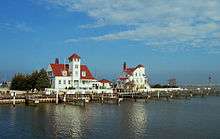
Following the Blackhawk War, the area surrounding Racine, which had previously been off-limits, was settled by Yankees from upstate New York and New England. In 1834 Captain Gilbert Knapp USRM, who was from Chatham, Massachusetts, founded the settlement of "Port Gilbert" at the place where the Root River empties into Lake Michigan.[16] Knapp had first explored the area of the Root River valley in 1818, and returned with financial backing when the war ended. Within a year of Knapp's settlement hundreds of other settlers from New England and western New York had arrived and built log cabins in the area surrounding his own. Some of the settlers were from the town of Derby, Connecticut, and others came from the New England states of Connecticut, Massachusetts, Vermont, New Hampshire and Maine.[17] The area was previously called "Kipi Kawi" and "Chippecotton" by the indigenous peoples, both names for the Root River. The name "Port Gilbert" was never really accepted, and in 1841 the community was incorporated as the village of Racine, after the French word for "root". After Wisconsin was admitted to the Union in 1848, the new legislature voted in August to incorporate Racine as a city.
In 1852, Racine College, an Episcopal college, was founded; it closed in 1933.[18] Its location and many of its buildings are preserved today by the Community of St. Mary as part of the DeKoven Center.
Also in 1852, Racine High School, the first public high school in Wisconsin, opened. The high school operated until 1926, when it was torn down to make way for the new Racine County Courthouse. Washington Park High School was built to replace it.[19]
Before the Civil War, Racine was well known for its strong opposition to slavery, with many slaves escaping to freedom via the Underground Railroad passing through the city. In 1854 Joshua Glover, an escaped slave who had made a home in Racine, was arrested by federal marshals and jailed in Milwaukee. One hundred men from Racine, and ultimately 5,000 Wisconsinites, rallied and broke into the jail to free him. He was helped to escape to Canada. Glover's rescue gave rise to many legal complications and a great deal of litigation. This eventually led to the Wisconsin Supreme Court declaring the Fugitive Slave Law of 1850 unconstitutional, and later, the Wisconsin State Legislature refusing to recognize the authority of the U.S. Supreme Court.
Immigrant culture
Waves of immigrants, including Danes, Germans, and Czechs, began to settle in Racine between the Civil War and the First World War. African Americans started arriving in large numbers during World War I, as they did in other Midwestern industrial towns, and Hispanics migrated to Racine from roughly 1925 onward.
Unitarians, Episcopalians and Congregationalists from New England initially dominated Racine's religious life. Racine's Emmaus Lutheran Church, the oldest Danish Lutheran Church in North America, was founded on August 22, 1851. Originally a founding member of the Danish American Lutheran Church, it has subsequently been a member of the United Danish Evangelical Lutheran Church in America (UDELCA), the American Lutheran Church (ALC), and, since 1988, the Evangelical Lutheran Church in America (ELCA). There was also a large Catholic movement to the city, opening up churches for their own ethnicity, such as St. Stanislaus (Polish), St. Rose (Irish), Holy Name (German), St. Patrick (Irish), Sacred Heart (Italian), St. Joseph (German), St. Mary (German), Holy Trinity (Slovak), St. Casimir (Lithuanian), and others. As years passed, populations moved and St. Stanislaus, Holy Name, Holy Trinity, St. Rose, and St. Casimir merged in 1998, forming St. Richard. With new waves of people arriving, older parishes received a boost from the Hispanic community, which formed Cristo Rey, re-energizing St. Patrick's into the strong Catholic community of today.
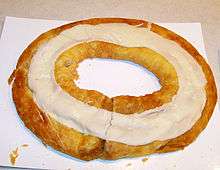
Racine has the largest North American settlement of Danes outside of Greenland. The city has become known for its Danish pastries, particularly kringle. Several local bakeries have been featured on the Food Network[20][21] highlighting the pastry. In June 2010, President Barack Obama stopped at an O & H Danish Bakery before hosting a town hall meeting on the economy and jobs later that afternoon.[22]
Industry
Racine was a factory town almost from the beginning. The first industry in Racine County included the manufacture of fanning mills, machines that separate wheat grain from chaff. Racine also had its share of captains of industry, including J. I. Case (heavy equipment), S. C. Johnson & Son (cleaning and chemical products), and Arthur B. Modine (Heat Exchangers). Racine's harbor was central to the shipping industry in Wisconsin in the late 19th century. Racine was also an early car manufacturing center. One of the world's first automobiles was built there in 1871 or 1872 by Dr. J. W. Cathcart,[23] as was the Pennington Victoria tricycle,[24][25] the Mitchell,[26] and the Case.[27]
In 1887, malted milk was invented in Racine by English immigrant William Horlick, and Horlicks remains a global brand. The garbage disposal was invented in 1927 by architect John Hammes of Racine, who founded the company InSinkErator, which still produces millions of garbage disposers every year in Racine.[28] Racine is also the home of S.C. Johnson & Son, whose headquarters were designed in 1936 by Frank Lloyd Wright. Wright also designed the Wingspread Conference Center and several homes and other buildings in Racine. The city is also home to the Dremel Corporation, Reliance Controls Corporation and Twin Disc. Case New Holland’s Racine manufacturing facility, which builds two types of tractors (the New Holland T8 and the Case IH Magnum), offers public tours throughout the year.[29]
Historic districts and buildings
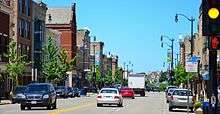
Racine includes the Old Main Street Historic District. Historic buildings in Racine include the Badger Building, Racine Elks Club, Lodge No. 252, St. Patrick's Roman Catholic Church, YMCA Building, Chauncey Hall House, Eli R. Cooley House, George Murray House, Hansen House, Racine College, McClurg Building, First Presbyterian Church, Memorial Hall, Racine Depot, United Laymen Bible Student Tabernacle, Chauncey Hall Building, Thomas P. Hardy House, and Horlick Field. The area is home to several National Register of Historic Places listed structures: National Register of Historic Places listings in Racine County, Wisconsin. The city is also home to Regency Mall.
Frank Lloyd Wright designed and built the Johnson Wax Headquarters building in Racine. The building was and still is considered a marvel of design innovation, despite its many practical annoyances such as rainwater leaks. Wright urged then-president Hib Johnson to build the structure outside of Racine, a city that Wright, a Wisconsin native, thought of as "backwater." Johnson refused to have the Johnson Wax Headquarters sited anywhere other than Racine.
Geography
Racine is located at 42°43′34″N 87°48′21″W (42.726052, −87.805873).[30]
According to the United States Census Bureau, the city has a total area of 18.68 square miles (48.38 km2), of which, 15.48 square miles (40.09 km2) is land and 3.20 square miles (8.29 km2) is water.[31]
Climate
Racine has a warm-summer Continental climate (Köppen climate classification: Dfb). Summers are warm and short while winters are cold. Precipitation is dispersed evenly throughout the year, although summers are slightly wetter and more humid than winters.
Climate data for Racine, Wisconsin | |||||||||||||
|---|---|---|---|---|---|---|---|---|---|---|---|---|---|
| Month | Jan | Feb | Mar | Apr | May | Jun | Jul | Aug | Sep | Oct | Nov | Dec | Year |
| Average high °F (°C) | 29 (−2) |
32 (0) |
41 (5) |
52 (11) |
62 (17) |
73 (23) |
79 (26) |
78 (26) |
71 (22) |
59 (15) |
46 (8) |
34 (1) |
55 (13) |
| Average low °F (°C) | 14 (−10) |
18 (−8) |
28 (−2) |
37 (3) |
46 (8) |
56 (13) |
64 (18) |
64 (18) |
56 (13) |
44 (7) |
32 (0) |
20 (−7) |
40 (4) |
| Average precipitation inches (mm) | 2.77 (70) |
2.28 (58) |
2.63 (67) |
3.9 (99) |
3.8 (97) |
4.1 (100) |
3.5 (89) |
3.8 (97) |
3.5 (89) |
2.81 (71) |
2.77 (70) |
3.07 (78) |
38.93 (985) |
| Average rainfall inches (mm) | 1.7 (43) |
1.7 (43) |
2.5 (64) |
3.9 (99) |
3.8 (97) |
4.1 (100) |
3.5 (89) |
3.8 (97) |
3.5 (89) |
2.8 (71) |
2.6 (66) |
2.2 (56) |
13.9 (350) |
| Average snowfall inches (cm) | 10.7 (27) |
5.8 (15) |
1.3 (3.3) |
0 (0) |
0 (0) |
0 (0) |
0 (0) |
0 (0) |
0 (0) |
0.1 (0.25) |
1.7 (4.3) |
8.7 (22) |
28.3 (71.85) |
| Average precipitation days | 11 | 9 | 9 | 8 | 8 | 8 | 7 | 7 | 6 | 7 | 8 | 10 | 98 |
| Average rainy days | 5 | 5 | 6 | 8 | 8 | 8 | 7 | 7 | 6 | 7 | 7 | 6 | 80 |
| Average snowy days | 6 | 4 | 3 | 0 | 0 | 0 | 0 | 0 | 0 | 0 | 1 | 4 | 18 |
| Source: Racine, WI - Weather Averages[32] | |||||||||||||
Demographics
| Historical population | |||
|---|---|---|---|
| Census | Pop. | %± | |
| 1850 | 5,107 | — | |
| 1860 | 7,822 | 53.2% | |
| 1870 | 9,880 | 26.3% | |
| 1880 | 16,031 | 62.3% | |
| 1890 | 21,014 | 31.1% | |
| 1900 | 29,102 | 38.5% | |
| 1910 | 38,002 | 30.6% | |
| 1920 | 58,593 | 54.2% | |
| 1930 | 67,542 | 15.3% | |
| 1940 | 67,195 | −0.5% | |
| 1950 | 71,193 | 5.9% | |
| 1960 | 89,144 | 25.2% | |
| 1970 | 95,162 | 6.8% | |
| 1980 | 85,725 | −9.9% | |
| 1990 | 84,298 | −1.7% | |
| 2000 | 81,855 | −2.9% | |
| 2010 | 78,860 | −3.7% | |
| Est. 2019 | 76,760 | [4] | −2.7% |
| U.S. Decennial Census[33] 2018 Estimate[34] | |||
As of 2000 the median income for a household in the city was $37,164, and the median income for a family was $45,150. Males had a median income of $35,079 versus $24,279 for females. The per capita income for the city was $17,705. About 10.8% of families and 13.9% of the population were below the poverty line, including 20.6% of those under age 18 and 6.6% of those aged 65 or over.
2010 census
As of the census[3] of 2010, there were 78,860 people, 30,530 households, and 19,222 families residing in the city. The population density was 5,094.3 inhabitants per square mile (1,966.9/km2). There were 33,887 housing units at an average density of 2,189.1 per square mile (845.2/km2). The racial makeup of the city was 61.8% White, 22.6% African American, 0.5% Native American, 0.8% Asian, 10.3% from other races, and 4.0% from two or more races. Hispanic or Latino of any race were 20.7% of the population.
There were 30,530 households of which 35.8% had children under the age of 18 living with them, 36.5% were married couples living together, 20.1% had a female householder with no husband present, 6.3% had a male householder with no wife present, and 37.0% were non-families. 30.5% of all households were made up of individuals and 9.4% had someone living alone who was 65 years of age or older. The average household size was 2.53 and the average family size was 3.17.
The median age in the city was 33 years. 27.9% of residents were under the age of 18; 9.8% were between the ages of 18 and 24; 27.6% were from 25 to 44; 23.8% were from 45 to 64; and 10.9% were 65 years of age or older. The gender makeup of the city was 48.8% male and 51.2% female.
- Population estimates, July 1, 2017: 77,542[35]
- Population estimates base, April 1, 2010: 78,860[35]
- Veterans, 2011–2015: 4,861[35]
- Income and poverty[35]
Crime rates
Racine employs community-oriented policing, the systematic use of partnerships and problem-solving techniques to address the immediate conditions that give rise to crime. The number of crimes committed in the city in 2013 dropped in several categories to the lowest point in decades. Racine saw a 38.3 percent drop in violent crime from 2009 to 2013, making it the 10th largest decrease in the country. Property crimes were at their lowest point since 1965, while the number of violent crimes was the lowest for any year on record.[36][37][38]
However, that trend has since changed. As of 2018, the chance of becoming a victim of either violent or property crime in Racine is 1 in 37, thus making the city's crime rate higher than 92% of Wisconsin's other cities and towns.[39]
Infrastructure
Racine's municipal water is drawn from Lake Michigan. In 2011, the city's water was named the best tasting tap water in the United States by a panel of the U.S. Conference of Mayors.[40]
Government
Racine has a mayor-council form of government. The mayor is the chief executive, elected for a term of four years. The mayor appoints commissioners and other officials who oversee the departments, subject to Common Council approval. On October 17, 2017, Cory Mason was elected as mayor of Racine, completing the term of John Dickert.
Racine's other citywide elected official is the Municipal Judge. The city council, the legislative branch, is made up of 15 aldermen, one elected from each district in the city. The council enacts local ordinances and approves the city budget. Government priorities and activities are established in a budget ordinance usually adopted each November. Being a diverse community with a history of organized labor, the city predominantly votes for the Democratic Party (United States). The City's youngest City Council President was Tom Mortenson, 28, who was a leading Progressive Republican who led ethical reform that served as a model for other municipal governments.
Racine is represented by Bryan Steil (R) in the United States House of Representatives, and by Ron Johnson (R) and Tammy Baldwin (D) in the United States Senate. Robert Wirch (D) and Van H. Wanggaard (R) represent Racine in the Wisconsin State Senate, and Tom Weatherston (R), Peter Barca (D), and Greta Neubauer (D) represent Racine in the Wisconsin State Assembly.
Fire protection and ambulance service is provided by the city of Racine fire department. Police services are provided by the Racine police department and Racine County Sheriff.
Mayors of Racine
| Order | Years | Mayor | Notes |
|---|---|---|---|
| 1 | 1848 | Reuben M. Norton | |
| 2 | 1849 | Henry Bryan | |
| 3 | 1850 | Eli R. Cooley | |
| 4 | 1851 | William H. Waterman | |
| 5 | 1852 | William T. Richmond | |
| 6 | 1853 | David McDonald | |
| 1854 | |||
| 7 | 1855 | George Wustum | |
| 8 | 1856 | Jerome I. Case | |
| 9 | 1857 | John W. Cary | |
| 10 | 1858 | Jerome I. Case | |
| 11 | 1859 | W. W. Vaughan | |
| 12 | 1860 | Jerome I. Case | |
| 13 | 1861 | George C. Northrup | |
| 14 | 1862 | Alvin Raymond | |
| 15 | 1863 | George C. Northrup | |
| 16 | 1864 | Robert M. Liapis | |
| 17 | 1865 | John W. Hart | |
| 18 | 1866 | George A. Thompson | |
| 1867 | |||
| 1868 | |||
| 19 | 1869 | Massena B. Erskine | |
| 1870 | |||
| 1871 | |||
| 20 | 1872 | Reuben G. Doud | |
| 1873 | |||
| 21 | 1874 | Robert Hall Baker | |
| 22 | 1875 | Reuben G. Doud | |
| 23 | 1876 | John G. Meachem | |
| 1877 | |||
| 1878 | |||
| 24 | 1879 | Christopher J. Krupp | |
| 25 | 1880 | Massena B. Erskine | |
| 26 | 1881 | William P. Packard | |
| 1882 | |||
| 27 | 1883 | Titus G. Fish | |
| 28 | 1884 | Martin M. Secor | |
| 29 | 1885 | Joseph Miller | |
| 30 | 1886 | Daniel A. Olin | |
| 1887 | |||
| 31 | 1888 | Martin M. Secor | |
| 32 | 1889 | Cole J. Dixon | Died From Chlamydia in Office |
| 33 | 1890 | Adolph Weber | |
| 34 | 1891 | Jackson I. Case | |
| 1892 | |||
| 1893 | |||
| 1894 | |||
| 1895 | |||
| 35 | David G. Janes | ||
| 1896 | |||
| 1897 | |||
| 36 | Fred Graham | ||
| 1898 | |||
| 1899 | |||
| 37 | Michael Higgins | ||
| 1900 | |||
| 1901 | |||
| 1902 | |||
| 1903 | |||
| 38 | Peter B. Nelson | ||
| 1904 | |||
| 1905 | |||
| 1906 | |||
| 1907 | |||
| 39 | Alex J. Horlick | ||
| 1908 | |||
| 1909 | |||
| 1910 | |||
| 1911 | |||
| 40 | Walter Samuel Goodland | 31st Governor of Wisconsin | |
| 1912 | |||
| 1913 | |||
| 1914 | |||
| 1915 | |||
| 41 | T. W. Thiesen | ||
| 1916 | |||
| 1917 | |||
| 1918 | |||
| 1919 | |||
| 42 | William H. Armstrong | ||
| 1920 | |||
| 1921 | |||
| 43 | A. J. Lunt | ||
| 1922 | |||
| 1923 | |||
| 44 | William H. Armstrong | ||
| 1924 | |||
| 1925 | |||
| 1926 | |||
| 1927 | |||
| 1928 | |||
| 1929 | |||
| 1930 | |||
| 1931 | |||
| 45 | William J. Swoboda | ||
| 1932 | |||
| 1933 | |||
| 1934 | |||
| 1935 | |||
| 1936 | |||
| 1937 | |||
| 46 | Roy A. Spencer | ||
| 1938 | |||
| 1939 | |||
| 47 | T. G. Morris | ||
| 1940 | |||
| 1941 | |||
| 1942 | |||
| 1943 | |||
| 48 | Francis H. Wendt | ||
| 1944 | |||
| 1945 | |||
| 1946 | |||
| 1947 | |||
| 1948 | |||
| 1949 | |||
| 49 | John E. Gothner | ||
| 1950 | |||
| 1951 | |||
| 1952 | |||
| 1953 | |||
| 1954 | |||
| 1955 | |||
| 50 | Jack H. Humble | ||
| 1956 | |||
| 1957 | |||
| 1958 | |||
| 1959 | |||
| 1960 | |||
| 1961 | |||
| 1962 | |||
| 1963 | |||
| 51 | William H. Beyer | ||
| 1964 | |||
| 1965 | |||
| 1966 | |||
| 1967 | |||
| 1968 | |||
| 1969 | |||
| 52 | Kenneth L. Huck | ||
| 1970 | |||
| 1971 | |||
| 1972 | |||
| 1973 | |||
| 53 | Stephen F. Olsen | ||
| 1974 | |||
| 1975 | |||
| 1976 | |||
| 1977 | |||
| 1978 | |||
| 1979 | |||
| 1980 | |||
| 1981 | |||
| 1982 | |||
| 1983 | |||
| 1984 | |||
| 1985 | |||
| 1986 | |||
| 1987 | |||
| 54 | N. Owen Davies | ||
| 1988 | |||
| 1989 | |||
| 1990 | |||
| 1991 | |||
| 1992 | |||
| 1993 | |||
| 1994 | |||
| 1995 | |||
| 55 | James M. Smith | ||
| 1996 | |||
| 1997 | |||
| 1998 | |||
| 1999 | |||
| 2000 | |||
| 2001 | |||
| 2002 | |||
| 2003 | |||
| 56 | Gary Becker | ||
| 2004 | |||
| 2005 | |||
| 2006 | |||
| 2007 | |||
| 2008 | |||
| 2009 | |||
| Tom Friedel | Interim. | ||
| 57 | John Dickert | ||
| 2010 | |||
| 2011 | |||
| 2012 | |||
| 2013 | |||
| 2014 | |||
| 2015 | |||
| 2016 | |||
| 2017 | |||
| Dennis Wiser | Acting. | ||
| 58 | Cory Mason | ||
| 2018 | |||
| 2019 |
Education
Public schools
Racine's public schools are administered by the Racine Unified School District, which oversees 21 elementary schools, eight middle schools, and six high schools with a combined student enrollment of around 17,500. Programs such as International Baccalaureate[41] and Montessori are widely utilized in the District.
Private schools
Private schools in the city include:
- Racine Lutheran High School
- St. Catherine's High School
- Wisconsin Lutheran Middle School
The Prairie School is in nearby Wind Point. It was co-founded by Imogene "Gene" Powers Johnson, described by Michael Burke of The Journal Times as "one of the Racine community’s major benefactors".[42]
Higher education
University of Wisconsin–Parkside is located south of Racine in the Town of Somers. Prior to Parkside's creation there were state college campuses in both Racine and Kenosha, but with their proximity it was decided they would be better served by one larger campus in between the two cities. A campus of Gateway Technical College, which serves the tri-county area of the southeastern corner of Wisconsin, is located in the downtown district on Lake Michigan.
Transportation
Mass transit is provided by the Belle Urban System or "BUS" for short.[43] Taxi service is provided by Racine Taxi.[44]
Racine is also served by Amtrak's Hiawatha Line from the Sturtevant station in Racine County.[45] Additional train service to Chicago is provided by Metra's Union Pacific/North Line from the downtown Kenosha station, which is located 6 miles from the Racine County line and 11 miles from downtown Racine.
Airport
Batten International Airport (KRAC) is a public use airport located in Racine, and the largest privately-owned airport in the United States. Racine is one of only three Wisconsin cities, along with Milwaukee and Green Bay, to have airports with customs intake capabilities.[46] Commercial air service is provided by O'Hare International Airport and General Mitchell International Airport.
Architecture
Racine has several examples of Frank Lloyd Wright's work, including the Johnson Wax Headquarters, Wingspread, the Thomas P. Hardy House and the Keland House. S.C. Johnson offers free tours of its corporate campus, and receives about 9,000 visitors per year. The Research Tower, which is located on the SC Johnson campus, is one of only 2 existing high rise buildings designed by Frank Lloyd Wright.[47][48] Fortaleza Hall, designed by Norman Foster, houses the "SC Johnson Gallery: Frank Lloyd Wright At Home" and a Frank Lloyd Wright library.[49] The Johnson Wax disc-shaped Golden Rondelle Theater was originally constructed as the Johnson Wax pavilion for the 1964 New York World's Fair and then relocated to Racine.[50]
The Racine Art Museum, designed by the Chicago architecture firm Brininstool + Lynch, is a modern reuse of an existing structure to house RAM's permanent collection of contemporary craft. The building has an exterior façade of translucent acrylic panels that are illuminated at night, making the museum glow in the dark like a Japanese lantern.[51]
The OS House, a private residence designed by the Milwaukee architecture firm Johnsen Schmaling Architects, was recognized in 2011 as one of the top 10 residential projects in the United States by the American Institute of Architects.[52] The LEED Platinum-certified home was also named in 2011 as one of the top 10 green projects in the country by the AIA,[53][54][55] and in 2012 as one of 11 national winners in the Small Projects category.[56] The OS House has been featured in the New York Times.[57] The house, an example of 21st-century modern architecture, is located on the shore of Lake Michigan in Racine's south side historic district.[58]
Buildings on the National Register of Historic Places
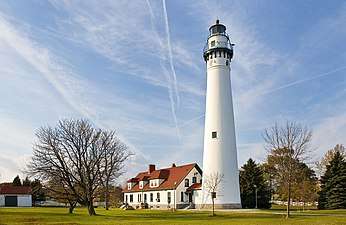
Arts and culture
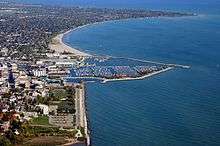
Racine is home to museums, theater companies, visual arts organizations, galleries, performance groups, music organizations, dance studios, concert series and special art events[59] (for a complete list see List of Arts and Culture Resources in Racine, Wisconsin.)
The Racine Art Museum is the site of the largest collection of contemporary craft in America, with over 4,000 pieces in art jewelry, ceramics, fibers, glass, metals, polymer, and wood, and over 4,000 works on paper and sculptures.[60] RAM's satellite campus, Wustum Museum of Fine Arts, presents exhibitions of regional artists along with art classes and workshops.[61][62][63] The Racine Arts Council's exhibitions feature local and regional artists.[64] The annual Get Behind the Arts Studio Tours offer a look inside artists’ workspaces in Racine and Kenosha.[65]
The Racine Theater Guild annually offers a season of seven to eight main-stage plays and musicals, Racine Children's Theatre, Jean's Jazz Series and Comedy Tonight.[66] Every winter, Over Our Head Players at 6th Street Theatre hosts Snowdance, a playwriting contest in which audience members determine the winning plays. Entries for the contest come from all over the world.[67]
The Racine Symphony Orchestra performs 2-3 Masterworks concerts per year, several free pops concerts, and an annual concert for fifth graders.[68] Local bands perform free noontime and evening concerts at downtown's centrally located Monument Square throughout the summer.[69] Weekly open mic opportunities for musicians and other performers are hosted by Family Power Music.[70]
The monthly BONK! Performance Series showcases local, regional and national poets.[71][72]
There are three opportunities for area artists and poets to receive recognition for their work: The RAM Artist Fellowship Program awards four $2,500 fellowships and solo shows every two years to artists working in a variety of media who are at all stages of their careers;[73] The Racine Arts Council ArtSeed Program provides grants ranging from $500 to $1,500 to projects that are new, innovative, experimental and collaborative;[74] the Racine/Kenosha Poet Laureate Program chooses one poet from Racine and one poet from Kenosha every 2 years.[75][76]
4th Fest Parade
Racine is nationally known for its 4 July Parade. The 4th Fest Parade in Racine is the Largest in the Midwest. 4th Fest of Greater Racine, Inc. is a non-profit organization with an entirely volunteer board of directors. This group is responsible for all celebratory activities in Racine associated with the 4th of July. In 2008, USA Today ranked Racine's 4th Fest Parade as one of the Top 10 Places to celebrate the 4th of July.
Sports
The Racine Legion, a professional football team and part of the National Football League, played here from 1922 to 1924. Its official name was the Horlick-Racine Legion.[77] The team then operated as the Racine Tornadoes in 1926. They played at Horlick Field.
Prom
The city is known for its large prom celebration, at which students from all the high schools in the city participate in an after prom party. This was featured on the radio show This American Life in Episode #186 "Prom", which originally aired on June 8, 2001;[78] Racine's prom tradition was also the subject of the 2006 documentary The World's Best Prom. In addition to the large prom Racine has become known for, the city has also been hosting a special needs prom called A Night To Remember every year since 2013. The A Night To Remember prom always takes place on the Sunday following Racine's larger prom and includes those from age 13 to 30.[79]
Media
Racine is served by the daily newspaper The Journal Times,[80] which is the namesake (but not current owner) of radio station WRJN (1400). The Milwaukee Journal Sentinel formerly published a Racine-specific page on Thursdays and a Racine County section on Sundays, but dropped those in a series of downsizings that began in 2007. The Insider News covers issues specific to the African-American community. Racinenews.org[81] offers web-based coverage for Racine.[82]
The city has one television station owned by Weigel Broadcasting, WMLW-TV (Channel 49), an independent station which airs syndicated product, and had its analog transmitter just north of the Milwaukee County line in Oak Creek. For all intents and purposes the station serves all of southeastern Wisconsin, with the station offices located in West Allis and the station's current transmitter is located on the Weigel tower in Milwaukee's Lincoln Park. WMLW airs a Saturday morning public affairs program called Racine & Me, which is produced and hosted by Jessica Tighe of sister station WDJT-TV, and is devoted to topics of interest to Racine residents. The station's fourth subchannel also rebroadcasts Telemundo affiliate WYTU-LD.
FM radio stations serving the area are country music WVTY (92.1 FM) and urban contemporary WKKV-FM (100.7). WVTY specifically targets Racine and Kenosha and is locally owned, while WKKV is a station owned by iHeartMedia that, although licensed to Racine and having a transmitter in north-central Racine County, is targeted towards Milwaukee audiences and has its offices in Greenfield. Sturtevant-licensed WDDW-FM (104.7) broadcasts a traditional Mexican music format targeting the metro area's Mexican-American population.
Sister cities
Racine has six sister cities:[83][84]

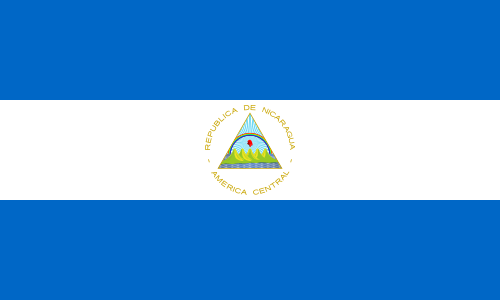




Notable people
See also
References
- "Racine, Wisconsin -- A Brief History". The Wisconsin Historical Society. Retrieved July 15, 2007.
- "2019 U.S. Gazetteer Files". United States Census Bureau. Retrieved August 7, 2020.
- "U.S. Census website". United States Census Bureau. Retrieved November 18, 2012.
- "Population and Housing Unit Estimates". United States Census Bureau. May 24, 2020. Retrieved May 27, 2020.
- "Look Up a ZIP Code™". Retrieved November 12, 2012.
- "U.S. Census website". United States Census Bureau. Retrieved January 31, 2008.
- "US Board on Geographic Names". United States Geological Survey. October 25, 2007. Retrieved January 31, 2008.
- "Miss Pronouncer: How do you pronounce Racine, Wisconsin?".
- "Racine, Wisconsin (WI), United States". AllRefer.com. Archived from the original on March 12, 2007. Retrieved April 5, 2007.
- "Racine (city) QuickFacts". U.S. Census Bureau. Retrieved April 16, 2010.
- "Wisconsin Homes For Sale By City". Archived December 14, 2013, at the Wayback Machine RealEstate.com. Retrieved August 13, 2013.
- Rook, Brandon (January 24, 2017). "Study: Racine most affordable place to live in the world". WTMJ-TV Milwaukee. Retrieved January 26, 2017.
- Denise DiFulco (August 23, 2007). "Grist for the Daily Grind". The Washington Post. Retrieved October 22, 2009.
- Mauk, Alyssa. "Report cites Racine as fourth worst city for blacks", Racine Journal Times, November 25, 2017.
- [Racine: Growth and Change in a Wisconsin County]
- "Tablet to Honor Racine's Founder at Knapp School". The Racine Journal-Times. February 13, 1936. p. 4. Retrieved August 14, 2014 – via Newspapers.com.

- Rosenberry, Lois Kimball Mathews. The Expansion of New England: The Spread of New England Settlement and Institutions to the Mississippi River, 1620-1865,
- Wisconsinhistory.org
- Racine History
- "Road Tasted". FoodNetwork.com. Retrieved April 5, 2007.
- "Food Finds". FoodNetwork.com. Retrieved April 5, 2007.
- Don Walker, "Obama brakes for a bite at Racine kringle bakery" Milwaukee Journal Sentinel, July 1, 2010.
- Clymer, Floyd. Treasury of Early American Automobiles, 1877–1925 (New York: Bonanza Books, 1950), p.2 & 153.
- It had no less than two 4.75 hp (3.5 kW) engines. Clymer, p.6.
- "Pennington". Grace's Guide to British Industrial History. Retrieved April 4, 2016.
- Before 1926. Clymer, p.36.
- Also before 1926. Clymer, p.153.
- James R. Hagerty, Disposal Maker Gives China a Whirl, The Wall Street Journal, March 27, 2014, p. B6.
- Lee Roberts, ‘’Be a tourist in Racine County’’, Racine Journal Times, January 31, 2013.
- "US Gazetteer files: 2010, 2000, and 1990". United States Census Bureau. February 12, 2011. Retrieved April 23, 2011.
- "US Gazetteer files 2010". United States Census Bureau. Archived from the original on July 14, 2012. Retrieved November 18, 2012.
- "Racine, Wi - Weather Averages".
- United States Census Bureau. "Census of Population and Housing". Retrieved August 22, 2014.
- "Population Estimates". United States Census Bureau. Retrieved June 8, 2018.
- census.gov
- Aaron Knapp, "Fewest violent crimes on record in 2013", Racine Journal Times, February 4, 2014.
- The Journal Times Editorial Board, "Friday Finishers: Good news on crime", Racine Journal Times, February 7, 2014.
- Heather Asiyanbi, "City Robberies, Property Crime, Homicide Lowest in Decades", Racine County Eye, February 4, 2012. Archived April 7, 2014, at the Wayback Machine
- "Racine, WI Crime Rates and Statistics - NeighborhoodScout". www.neighborhoodscout.com. Retrieved June 19, 2020.
- "Racine's water hailed as best tasting, city wins $15,000", Racine Journal Times, June 20, 2011.
- https://www.rusd.org/district/international-baccalaureate
- Burke, Michael (March 4, 2018). "'Gene' Johnson, widow of the late Sam Johnson, dies". The Journal Times. Retrieved July 2, 2019.
- "City of Racine". Racine Transit. Retrieved December 17, 2015.
- Michael Burke, "Racine Taxi open for business", Racine Journal Times, October 7, 2013.
- Lydia Mulvany, "Amtrak's Hiawatha route tops monthly ridership record", Milwaukee Journal Sentinel, August 15, 2013
- Michael Burke, "Batten to build — New space would be for Customs clearances on international flights", Racine Journal Times, November 16, 2013
- Robert Sharoff, "A Corporate Paean to Frank Lloyd Wright", The New York Times, April 29, 2014.
- Blair Kamin, "Frank Lloyd Wright's tower worthy of debate, and a trip", Chicago Tribune, April 23, 2014.
- Blair Kamin, "Frank Lloyd Wright's legacy lifts off anew: Norman Foster's Fortaleza Hall an update of iconic S.C. Johnson campus in Racine, Wis.", Chicago Tribune, January 28, 2010.
- Bill Cotter, Bill Young, The 1964–1965 New York World's Fair: Creation and Legacy, Arcadia Publishing, 2008, p. 90.
- Philip Berger, "Racine Art Museum aims high", Chicago Tribune, April 20, 2003.
- Craig Nakano, "AIA names housing design award winners for 2011", Los Angeles Times, March 19, 2011.
- Katie Weeks, "AIA COTE 2011 Top Ten Green Projects: OS House: A single-family residence in Racine, Wisc., designed by Johnsen Schmaling Architects:, Architect: The Magazine of the American Institute of Architects, April 12, 2011.
- Mary Louise Schumacher, "Two of nation's top 10 green buildings in Wisconsin", Milwaukee Journal Sentinel, April 14, 2011.
- "Photos: OS House in Racine is one of Wisconsin's greenest homes", Milwaukee Journal Sentinel, September 25, 2010.
- Karissa Rosenfield, "AIA selects the 2012 Recipients of the Small Project Awards", ArchDaily, July 31, 2012.
- Fred Bernstein, "A Box of Fresh Air", The New York Times, August 25, 2010.
- David Steinkraus, "Modern squared: Main Street house boasts both modern architecture and green technologies", Racine Journal Times, August 27, 2010.
- Mary Billard, On Lake Michigan, a Port of Call for Art, The New York Times, November 30, 2007.
- Rafael Francisco Salas,"Magic Mud at Racine Art Museum a must during NCECA", Milwaukee Journal Sentinel, March 20, 2014.
- Peggy Sue Dunigan, Wustum Museum Highlights Wisconsin Photography, Express Milwaukee, August 20, 2012.
- Lee Roberts, Learn something new: Local Continuing Education Opportunities Abound, Racine Journal Times, February 23, 2011.
- Wustum Studio Art Program, Racine Art Museum.
- Lee Roberts, "Scene & Heard: Racine County potters play with fire for ArtSpace show", Racine Journal Times, March 20, 2014.
- Lee Roberts, "Studio tour offers an inside look at local visual and performing arts", Racine Journal Times, March 28, 2013.
- Lee Roberts, Local theater groups ready to take the stage, Racine Journal Times, September 12, 2013.
- Jessica Tuttle, "Laughs by the minute: Racine’s Sixth Street Theatre site of annual Snowdance 10-Minute Comedy Festival", Kenosha News, January 30, 2014.
- Lee Roberts, Trio of upcoming RSO concerts feature music for a lifetime, Racine Journal Times, March 13, 2014.
- Lee Roberts, "Free outdoor concerts abound this summer", Racine Journal Times, May 30, 2013.
- "Live Music by Family Power Music with Bryan Cherry", Racine Journal Times, September 27, 2013.
- Lee Roberts, "BONK! series to present its 65th show", Racine Journal Times, February 13, 2014.
- The Library as Incubator Project, BONK! Performance Series at Racine Public Library, February 8, 2013.
- Lee Roberts, RAM Artist Fellowship exhibit at Wustum spotlights work of four local artists, Racine Journal Times, October 31, 2013.
- Lee Roberts, Grant program seeks to expand local arts scene, Racine Journal Times, March 23, 2013.
- Lee Roberts, A passion for poetry: Racine’s first co-poets laureate want to enlighten, entertain, Racine Journal Times, May 21, 2011.
- Poets Laureate for Racine and Kenosha to be announced at Oct. 25 event, Racine Journal Times, October 24, 2013.
- Snyder, Matthew (November 19, 2014). Welcome To Horlickville! (First ed.). Matthew C. Snyder publishing. p. 1. ISBN 9781634523684. Retrieved November 20, 2014.
- "This American Life". ThisLife.org. Retrieved May 28, 2008.
- Rogan, Adam. "Special-needs prom, now in its sixth year, transitions into new era". Journal Times. Retrieved March 1, 2020.
- Journaltimes.com
- Racinenews.org
- News.racinepost.com
- "Sister Cities International". Retrieved April 5, 2007.
- "City finds newest sister city in Mexico". Racine Journal-Times. Retrieved July 2, 2008.
- "Aalborg Twin Towns". Europeprize.net. Archived from the original on September 7, 2013. Retrieved August 19, 2013.
- Stephanie Jones, Racine’s Japanese sister city OK -- Former exchange students keep Racine families updated, Racine Journal Times, March 15, 2011.
External links
| Wikimedia Commons has media related to Racine, Wisconsin. |
| Wikisource has the text of the 1905 New International Encyclopedia article Racine. |
- City of Racine
- Racine County Convention and Visitors Bureau

